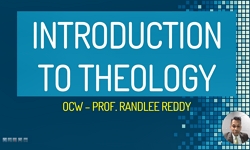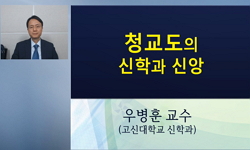There has been a long history of struggles in establishing Christian counseling among Christian psychologists, counselors, and psychotherapists. Perhaps for the first time in the history of counseling and psychotherapy, science and religion were separ...
http://chineseinput.net/에서 pinyin(병음)방식으로 중국어를 변환할 수 있습니다.
변환된 중국어를 복사하여 사용하시면 됩니다.
- 中文 을 입력하시려면 zhongwen을 입력하시고 space를누르시면됩니다.
- 北京 을 입력하시려면 beijing을 입력하시고 space를 누르시면 됩니다.
https://www.riss.kr/link?id=A35494964
-
저자
Kim, Yong-Tae (Christian Counseling at TTGST)
- 발행기관
- 학술지명
- 권호사항
-
발행연도
2002
-
작성언어
English
- 주제어
-
KDC
231
-
자료형태
학술저널
-
수록면
36-60(25쪽)
- 제공처
- 소장기관
-
0
상세조회 -
0
다운로드
부가정보
다국어 초록 (Multilingual Abstract)
There has been a long history of struggles in establishing Christian counseling among Christian psychologists, counselors, and psychotherapists. Perhaps for the first time in the history of counseling and psychotherapy, science and religion were separated. The role of science was to observe and to describe the given phenomena. The role of religion was to make a value judgment. On the theoretical level, the separation of the two has been possible. But on the practical level, the two cannot be completely separated. Counseling and psychotherapy is the activity in the area of applied science, in which the description and value judgment go hand in hand. Especially, Christian counselors and psychotherapists strongly feel that they have to deal with both areas in their clinical practice. The discipline of Christian counseling comes out of the necessity of blending together the two areas of description and value judgment.
To deal with the two areas is not easy for Christian counselors and psychotherapists. Since Fritz Kunkel first used the term "integration" in 1953 (Vande Kemp, 1996, p. 77), there has been great confusion about the integration between science and religion until recent years. Scholars use the term integration inconsistently. Some scholars prefer the theoretical approach to integration while other scholars prefer the practical approach. Scholars differ not just on how to integrate the two approaches, but also on what exactly to integrate. It seems that the agreement of what and of how to integrate is almost impossible because of the great variety of integrative works.
Even though the concern for blending together the two areas is increasing, there is little direction on how to proceed. This article has been written in the context of the confusion of integration and tries to show the whole spectrum of integration between science and religion in the area of counseling and psychotherapy. By presenting the spectrum, the readers will grasp the whole picture of the struggle of integration during the past few decades. A number of articles and books available are used for the analysis and synthesis. Most of the articles for integration have been published in the Journal of Psychology and Theology or the Journal of Psychology and Christianity, which are two leading journals for integration. This article will present the contents and models of integration. Concerning content, many areas will be covered, such as the history of integration, the concept of integration, the goals of counseling, and the different characteristics of Christian counseling. Concerning integration, the various approaches to integration will be presented. The models of the different approaches will be examined and compared. In the conclusion, useful models for analyzing integration will be suggested, with the hope that readers can use the suggested framework to understand better the various forms of integration.
동일학술지(권/호) 다른 논문
-
- 횃불트리니티신학대학원대학교
- Glenn A. Jent
- 2002
-
RECENT TRENDS IN APPROACHING THE OLD TESTAMENT
- 횃불트리니티신학대학원대학교
- Kim, Yoon-Hee
- 2002
-
THE INTEGRITY OF 2 CORINTHIANS
- 횃불트리니티신학대학원대학교
- Chang, Steven S. H.
- 2002
-
MISSIOLOGICAL ANALYSIS OF JAPANESE RELIGIOSITY
- 횃불트리니티신학대학원대학교
- Eiko Takamizawa
- 2002




 RISS
RISS







